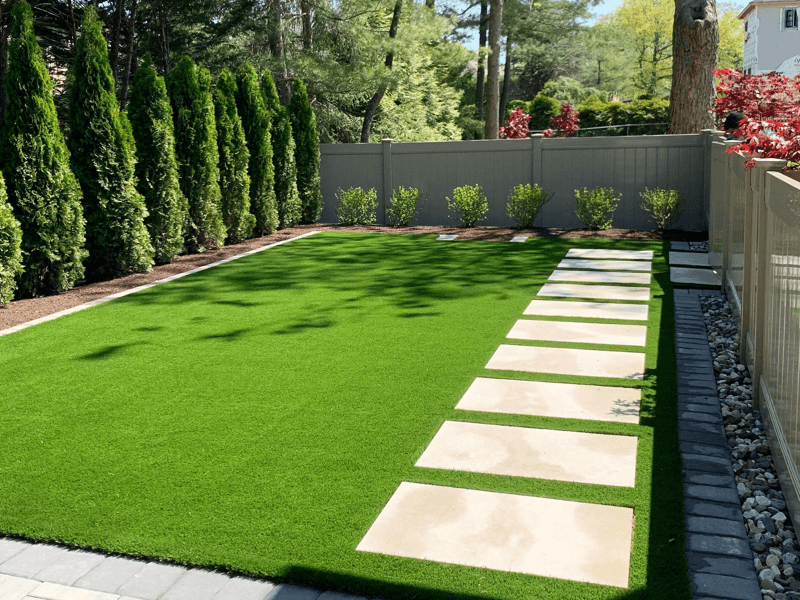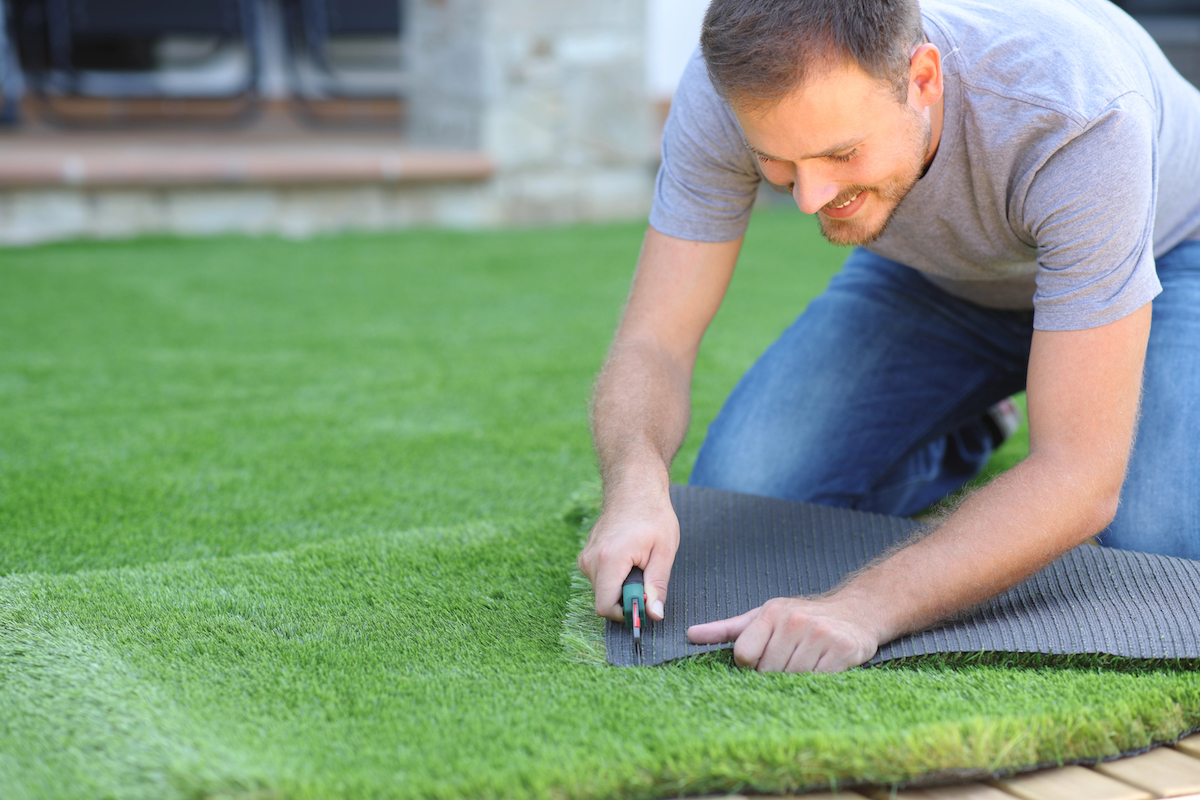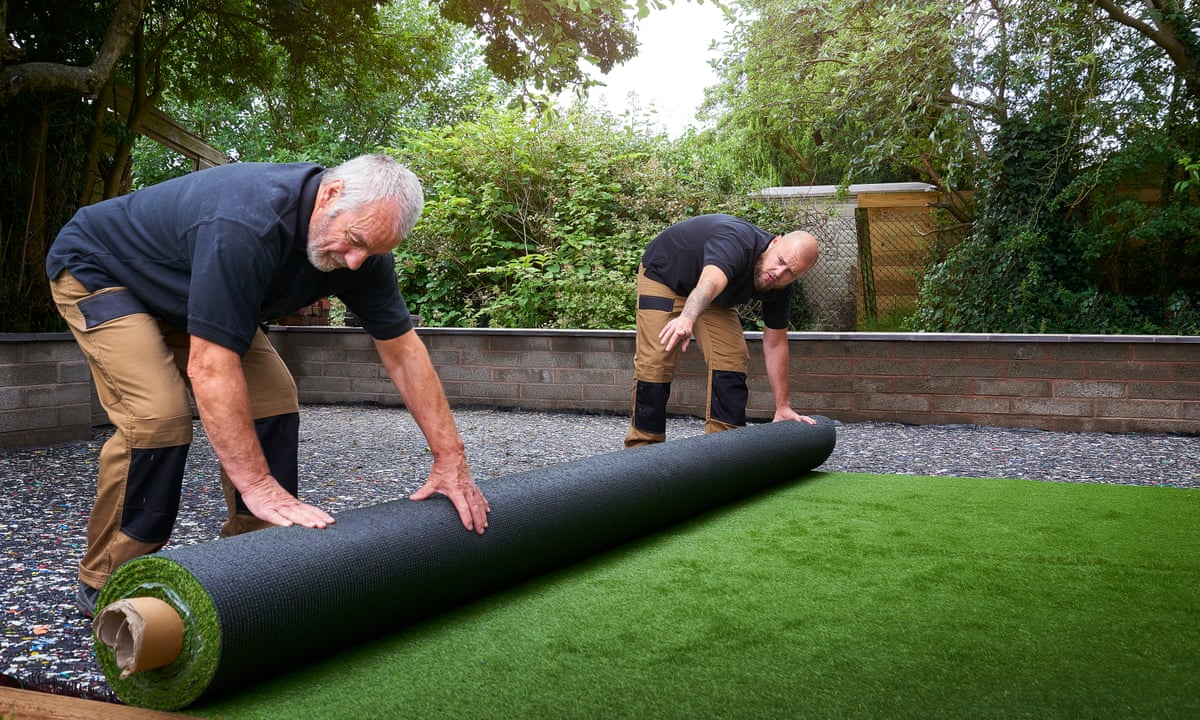Sustainable Arizona Artificial Turf for a All-Season Lush Green Lawn
Sustainable Arizona Artificial Turf for a All-Season Lush Green Lawn
Blog Article
Delve Into the Environmental Conveniences of Opting for Artificial Grass Solutions
The fostering of artificial lawn services offers a compelling opportunity to deal with pushing environmental obstacles. By significantly decreasing water use and minimizing the application of dangerous chemicals, these options not just promote sustainable landscape design yet also secure neighborhood environments.
Water Preservation Conveniences
One of the most substantial advantages of synthetic turf is its capability to save water. In contrast, man-made grass does not require watering, substantially lowering the overall need for water resources.
By eliminating the requirement for regular watering, synthetic grass adds to lasting landscape techniques and aids reduce the ecological influence of extreme water usage. The conservation of water prolongs to the reduction of overflow, which can lead to soil erosion and waterway air pollution.
Furthermore, the installation of fabricated lawn enables home owners and municipalities to allot water resources more efficiently, concentrating on essential usages such as alcohol consumption water and agriculture. The shift towards synthetic grass not just promotes liable water use yet also straightens with more comprehensive environmental objectives targeted at maintaining natural sources.
As areas increasingly focus on sustainability, the water preservation advantages of synthetic grass offer an engaging case for its fostering in business and household landscape design projects.
Reduced Chemical Use
The transition to synthetic grass dramatically lowers the dependence on chemical therapies frequently made use of in natural yard maintenance. Typical lawn management normally includes the application of herbicides, plant foods, and chemicals to advertise growth and control bugs. These chemicals can posture threats to human wellness, neighborhood wildlife, and the setting, adding to soil and water contamination.
In comparison, fabricated turf removes the need for these unsafe compounds. Once set up, it requires marginal upkeep, mainly consisting of normal cleansing and occasional infill replenishment. This reduction in chemical use not just benefits the immediate setting yet likewise contributes to more comprehensive environmental stability. By lessening the launch of synthetic substances into the ecosystem, fabricated grass advertises healthier dirt and water supply.
Moreover, the absence of chemical overflow connected with fabricated turf setups helps protect neighborhood rivers from air pollution, supporting marine life and preserving biodiversity. Artificial turf companies phoenix. As communities progressively focus on lasting methods, selecting synthetic grass presents a viable remedy that straightens with environmental preservation goals. Via this shift, homeowner can delight in lavish eco-friendly areas without compromising environmental health, leading the way for an extra lasting future
Reduced Carbon Impact

Additionally, the installment of synthetic grass can result in significant water preservation. All-natural yards need considerable quantities article source of water for watering, which not only includes in the carbon impact associated with water removal and therapy yet additionally strains neighborhood water sources. On the other hand, synthetic grass requires minimal maintenance, calling for no watering, thereby significantly decreasing water use and its linked power prices.
Furthermore, the durability of man-made grass adds to its decreased carbon effect. With a life expectancy of approximately 15 years or more, the requirement for frequent replacements is reduced, resulting in less waste and lower energy intake in manufacturing and getting rid of typical lawn alternatives. Overall, synthetic grass offers a lasting choice for environmentally conscious landscaping.
Environment Preservation
Habitat conservation is a critical consideration in the dispute over landscape design options, specifically when contrasting synthetic grass to all-natural grass. All-natural turf yards typically call for considerable upkeep, including making use of plant foods, chemicals, and herbicides, which can adversely affect local ecological communities. These chemicals can leach into the dirt and rivers, damaging native plants and animals and interrupting regional environments.
In comparison, man-made turf presents a chance to lower the ecological impact of landscape design. By going with artificial turf, home owners can lessen the disturbance of all-natural habitats connected with typical yard care methods. Synthetic turf gets rid of the demand for unsafe chemicals, thereby protecting close-by wildlife and maintaining the stability of bordering communities. Furthermore, the installment of fabricated grass can cause the conversion of former grass areas into more biodiverse landscapes, such as pollinator gardens or indigenous plant areas, which can sustain regional wildlife.
Ultimately, the transition to synthetic grass not only conserves water and minimizes maintenance initiatives yet additionally fosters Continue a much more unified relationship in between human tasks and the natural surroundings, promoting habitat conservation while doing so.
Long-Term Sustainability
Lasting sustainability is an important consider evaluating the advantages of man-made lawn over conventional yard lawns. Among the most substantial advantages of artificial lawn is its resilience; it can last try here approximately 15-20 years with very little maintenance, whereas all-natural lawn calls for frequent reseeding and replacement. This durability minimizes the demand for consistent sources, such as water, fertilizers, and chemicals, which are crucial for maintaining a healthy and balanced turf lawn.
Additionally, artificial lawn contributes to a reduction in carbon emissions related to grass treatment equipment. Traditional yards often require gas-powered lawn mowers, leaners, and blowers, every one of which add to air contamination. Arizona artificial turf. On the other hand, artificial turf removes the need for such equipment, advertising a cleaner atmosphere
Moreover, the production of synthetic lawn significantly utilizes recycled materials, boosting its sustainability profile. As suppliers take on environmentally friendly techniques, the ecological footprint of synthetic lawn remains to decrease.

Final Thought
The adoption of synthetic grass services provides considerable ecological benefits, including significant water conservation, lowered dependence on hazardous chemicals, and a lower carbon impact. Additionally, synthetic grass aids in protecting all-natural habitats by reducing land disruption and advertising lasting sustainability via the usage of durable materials. Jointly, these factors underscore the potential of man-made lawn to contribute favorably to environmental health and offer a practical choice to traditional landscaping methods in an increasingly resource-conscious globe.
In contrast, man-made turf does not require watering, dramatically minimizing the overall need for water sources. By lessening the release of synthetic compounds right into the community, fabricated lawn advertises much healthier dirt and water systems.
In addition, the setup of artificial lawn can result in substantial water preservation. In comparison, synthetic turf requires minimal upkeep, needing no watering, thus significantly lowering water use and its linked energy prices.

Report this page